Interview with Romain, Co-Founder of The Broken Arm
- kikokurative

- Sep 14
- 22 min read
Context : This interview was conducted on April 26th, 2023. To give you some context : at the time, The Broken Arm had just celebrated its 10th anniversary and re-released its X-Alp collaboration however, Salomon had not yet brought the model back on their end. The interview was conducted in French but is subtitled in English.
Kolroy : Can you tell me the story of The Broken Arm ? How did it all start ? Now we can see the result, it’s been around for 10 years, I believe.
Romain : Yeah, that’s right since February.
Kolroy : And how did it all begin ?
Romain : There are three of us who co-own the store : Anais, Guillaume, and me : Romain. It started a little over 15 years ago. We were friends and shared a passion for fashion, but not all of us were working in fashion at the time. Together with a group of other people, nine of us in total, we created a website that was like a journal of inspiration and influences. It was called « Des Jeunes Gens Modernes ».
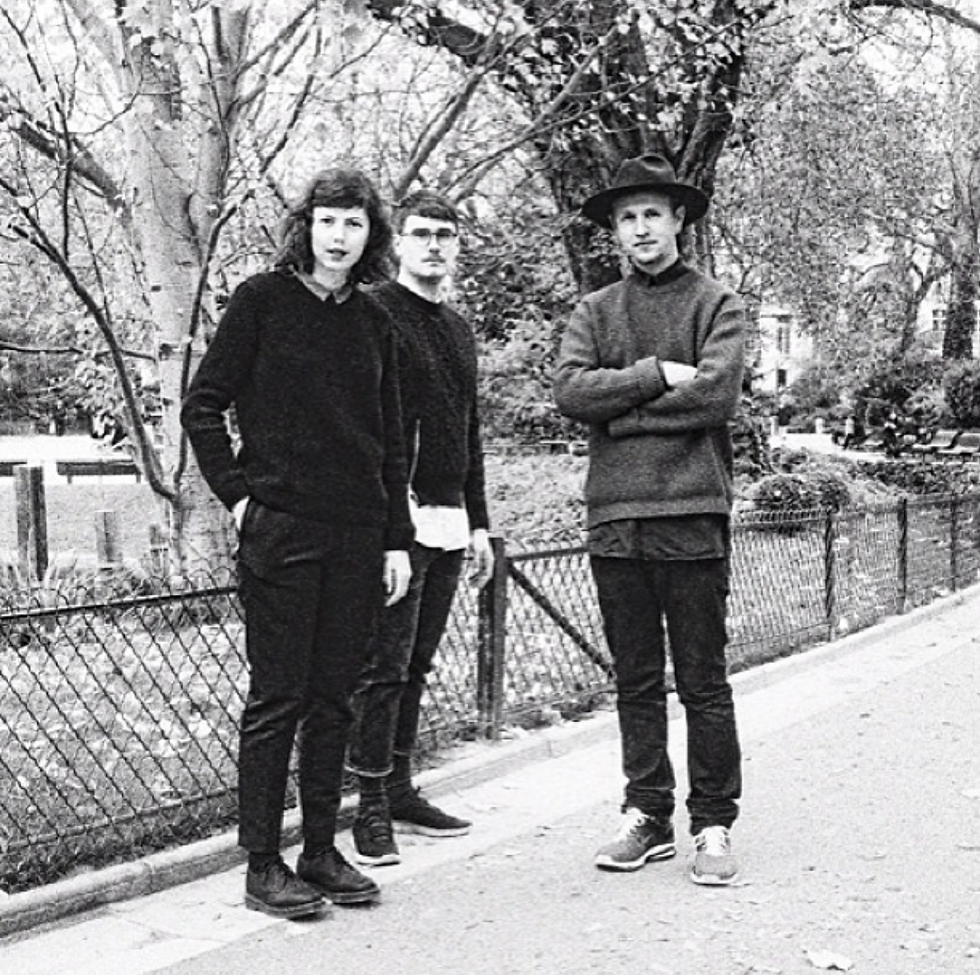
Kolroy : So it doesn’t exist anymore ?
Romain : No, it doesn’t exist anymore. It was kind of like an online magazine, if you will, where we’d post product releases we liked, but also deeper articles on designers. Musical inspirations, design pieces… lots of things that brought together everything we loved, whether it was directly fashion-related or just connected to it.
Like how music influenced a certain designer… We also did interviews. It was quite broad, we had in-depth pieces, but also more of a diary section with photos and that kind of thing.
We did that for a while. It was a passion project alongside our day jobs. I was working as an assistant in an art gallery, Guillaume was assisting a man who did fashion consulting, and Anais was also working in a consulting firm. The others were more or less in the same field too.
Kolroy : But were they also founders of The Broken Arm ?
Romain : No. At that point, we were at a stage where we wanted to take things a bit further, not just through the online magazine, but to make it more tangible, to give it a physical form. We wanted to create a space that could ideally bring all of that together, but above all, one that would be focused on fashion, a physical store.
The Broken Arm Shop Our references were as much boutiques like Maria Luisa, where you could find pieces from established designers but also discover younger ones, as they were skate shops, where there’s a bench out front and it always draws in a bunch of kids who come to check things out and hang around…
So we managed to make it happen. We found a space in a neighborhood where, at the time, everything was under construction, even Le Carreau du Temple. It wasn’t an expensive area.
Kolroy : Oh right, because today that location is really strategic.
Romain : Yeah, but we already loved it back then because of the park and everything. But otherwise, there wasn’t much around, just Ofr across the street. Then behind Rue de Bretagne, it was kind of a no man’s land. That whole part was empty. The entire street was blocked off because they were digging inside Le Carreau du Temple… So we liked that space. It used to be a Chinese jewelry exporter, like so many others back then.
We managed to get the space, did the renovations ourselves, and then opened…
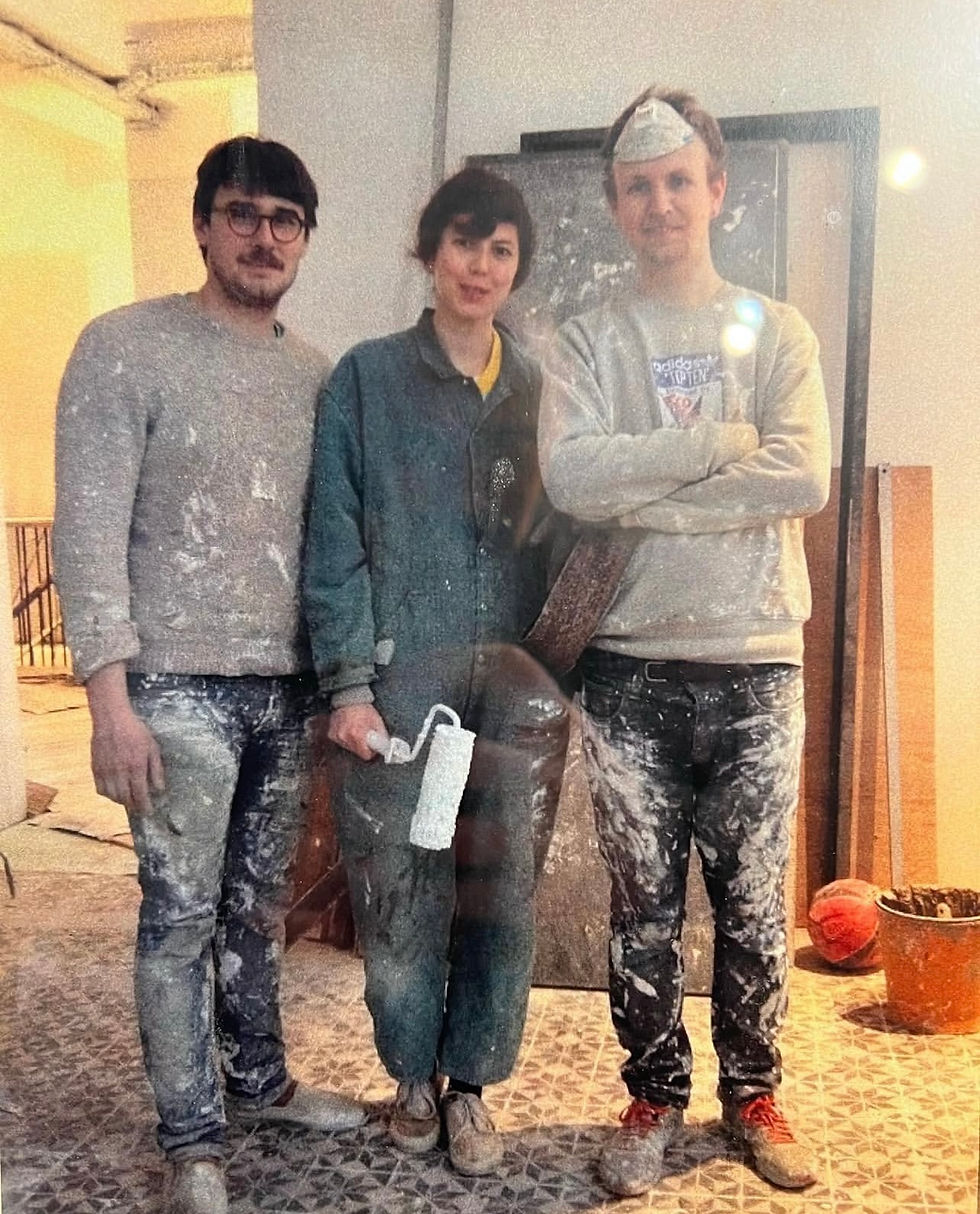
We had to convince the brands about our project, that’s a whole process. But once one of them trusts you, it becomes easier to get another one on board…
Kolroy : And did you already have any contacts that helped you get those first brands ? Because at the beginning, that part is really tough.
Romain : Not really, no. We’d go to the brand’s website, look for the sales contact, and send a message. The only connection we had, kind of, was that while we were setting up the store, I was working a bit with Carven during showroom seasons.
So yeah, but we already had a clear idea of what we wanted to do, putting young designers alongside more established high-end brands. But at first, it wasn’t easy. Little by little, we tried to build it up that way.
We had Raf Simons from the very beginning, and then things started to grow. It’s been 8 years now that we’ve had Prada. At one point, they weren’t selling through any stores other than their own, but we reached out again and told them we’d love to build a more curated project, with pieces they might not carry in their own boutiques, but that we felt were worth showing.
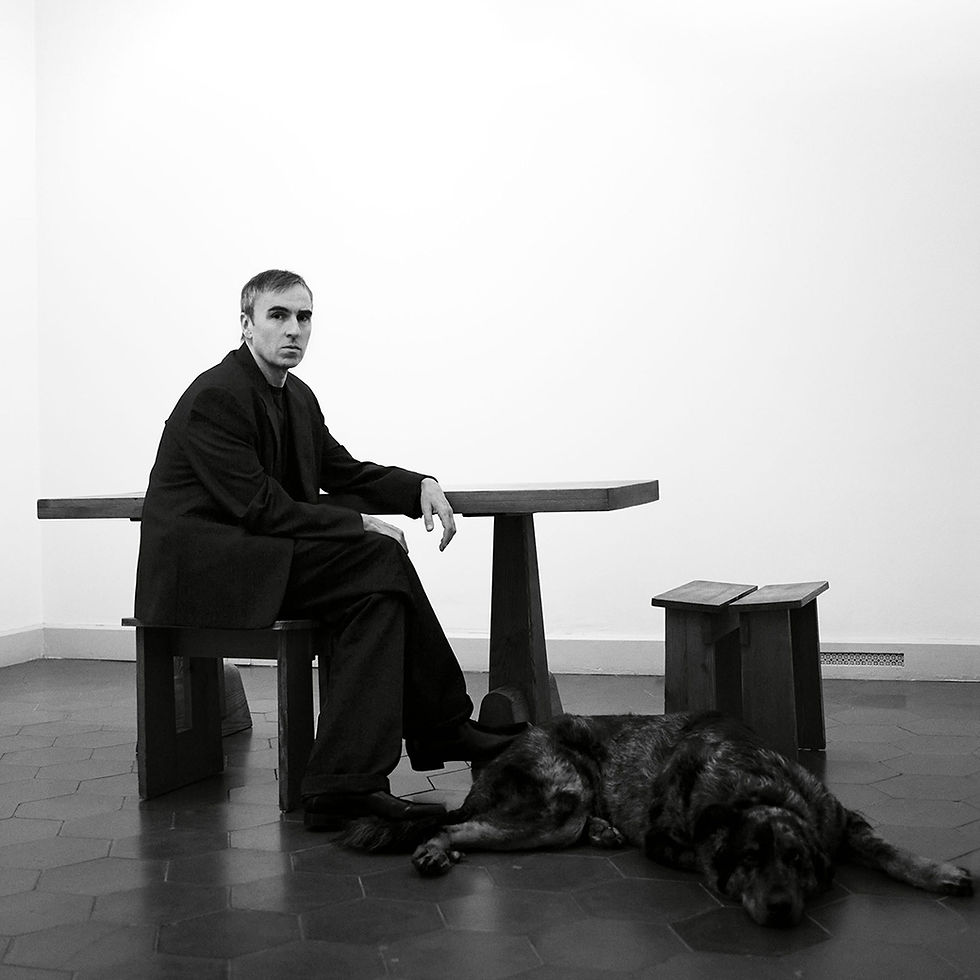
Kolroy : You mean more runway-type pieces ?
Romain : Yeah, more runway pieces that usually get passed over, because the buying for boutiques and flagships doesn’t really work the same way. In the end, they end up buying stuff that was shown the previous season, and not necessarily the full vision behind the collection.
Kolroy : And do you have an example of a young designer who kind of got their start here ? Someone who wasn’t really well known at the time ?
Jacquemus, at the very beginning, more than 10 years ago, I think we were one of his first boutiques. He already had Opening Ceremony, but here, for example, he could come to Paris and actually see his clothes in a store, which hadn’t really happened before. We also had Marine Serre. Kiko too, we had his first season, even though he’d already done a small thing with Stüssy while he was still studying. But his first real collection was in the shop.
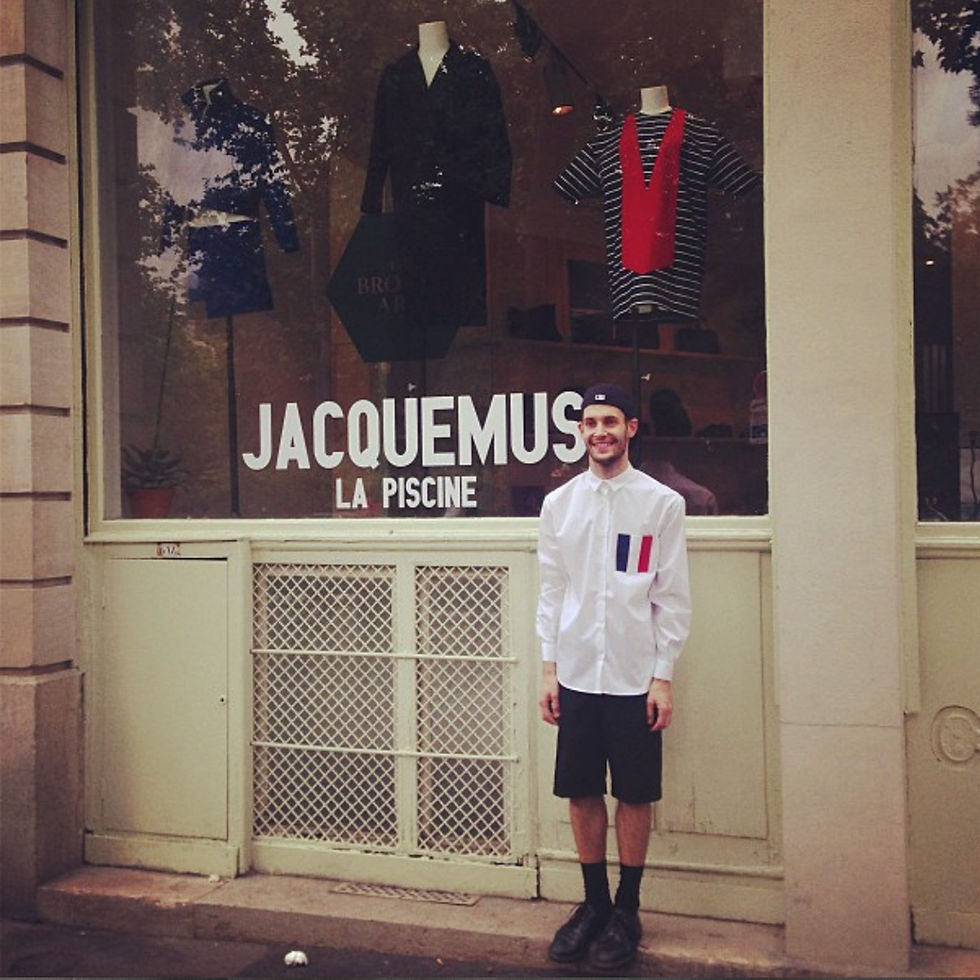
Kolroy : But I’m wondering, how do you actually discover these designers ? I feel like there’s already a curatorial approach at the core, kind of like what you were doing with your former magazine.
Romain : Yeah, yeah, exactly, it’s all about selection.
“Rick Owens, we met him because he just happened to walk into the shop one day“

Kolroy : Do brands or designers ever come to you too ? Or is it more you reaching out ?
Romain : We’ve seen every kind of situation. Namacheko, for example, he was a customer at the shop, and one day he came in and told us he had a brand. His studio was just on the street behind, and he invited us to stop by. That’s how the conversation started. Same with Niccolò Pasqualetti. And Rick Owens, we met him because he just happened to walk into the shop one day. There have been lots of moments like that.
But overall, it’s mostly us who’ve reached out to the brands.
Even though those kinds of encounters happen, we’ve usually been the ones to initiate contact.
Kolroy : I’m also really interested in your relationship with Salomon,
when did that actually start ? When was the first collaboration ?
Romain : I think it was about 8 years ago.
Kolroy : 8 years ago, I mean…There wasn’t really a “Salomon” back then, at least not in that sense.
Romain : Yeah, for sure.
We liked technical sneakers because you could see everything, there were all these different types, you know ? Some with exposed stitching... but everything had a meaning.
Even when we were younger and we were into Nike sneakers, you had the visible Air bubbles, and whether it was just storytelling or actual performance tech, it still said something. Like, this is a cushion, it conveyed a sense of technology and performance.
And then, when we discovered trail running shoes, that whole category took it even further, with shapes and constructions you just don’t usually see. The first pair we saw was actually a pair of Snowcross. They were made for walking in the snow, with metal spikes underneath.
And that’s what led to our first collaboration. That’s why we reached out to them. We said : “We saw this pair that we think is really great, the only thing is, with the metal spikes, it’s hard to walk in. How is it made ? Do you think we could make a version of it ? Same silhouette, just without the spikes ?”
Kolroy : And did they know who you were back then ?
Romain : No, I don’t think so.
Kolroy : But they were receptive anyway ?
Romain : Yeah. In the meantime, we had also reached out to their sales team to carry some of their trail products. And of course, there was always that big debate : “Yeah, but we’re a performance brand, we don’t want to be in a fashion store.”
So we explained that, at the time, we were already selling Nike Gyakusou and even though Jun Takahashi has a fashion label, he’s also a runner. What he was really interested in with Nike was developing the running side of things.

So with that in mind, we tried to convince them saying, “Yes, of course people might wear them on the street, but they’re also meant for running.” That was the starting point. And when someone comes into the shop to buy sneakers, we advise them based on what they’re actually going to do.
If someone says, “I’m training for a half marathon,” we’re not going to send them out with a pair that has nothing to do with that, that’s not the point. There’s a follow-up behind the sale, and we actually know what we’re talking about when it comes to sneaker types.
So yeah, 8 years ago we did that first pair, it was a colorway.
Kolroy : What was the name ?
Romain : A Snowcross.
Kolroy : Ah, the Snowcross, okay !
Romain : Yeah, and with the colorway, we really tried to highlight all the technical components. The heel was orange, there was green and black on the upper with the zip, and we added our logo too.
Kolroy : Is it the high-top pair ?
Romain : Yes exactly ! It’s actually a model they’ve now developed as part of the range without the metal spikes, originally it only existed with them.
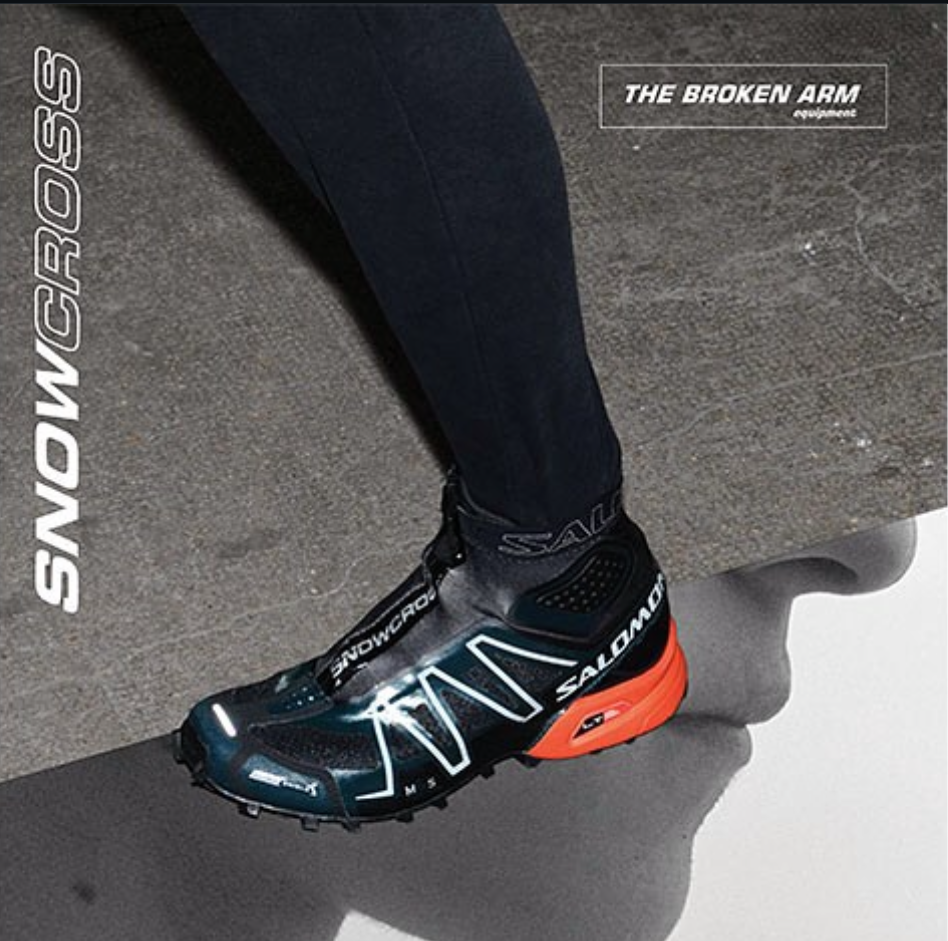
“We always try not to go for the easy option. There are pairs we know will sell, but that doesn’t mean we just go for it blindly.“
Kolroy : So at the beginning it was mostly about colorways, but I feel like the more recent collabs with Salomon go further than that.
Romain : Yeah, well, it’s always the same, the sneaker industry is super expensive when it comes to things like creating molds, and we’re not designers either, so we’re not pretending we can start developing our own tooling... So we try to do what we can, it’s like someone gives you a toolbox and you just try to build something with the means you have, within the limits. And we’re never going to be designers, we get that.
Like you said, it’s curation : we select things. We know what we like, hopefully what our customers will like, what might work for different reasons. And we always try not to go for the easy option. There are pairs we know will sell, but that doesn’t mean we just go for it blindly. We also try to tell stories, to place things in a context.
Like the DesAlpes pair we did that was inspired by something cultural.
Or the Texas pair that one was totally invented, inspired by the hides of Texan cows, and it was kind of an homage to the artists who moved out to Marfa.
All of that comes through in the sneaker’s design. In the end, we think that big sole, the hiking-inspired shape, really works with that kind of print or those materials...
But beyond that, we also like to put it into context, we create a little booklet, we shoot photos…
Every time we work with them, we handle the design, development, all the creative direction around the communication, and everything that goes with it.
Kolroy : That’s something I was wondering, do you do creative direction for them outside of the collabs ? Or for other brands ?
Romain : Not for other brands. With Salomon, we talk about a lot of things, like colors for their main range. There have been times where we’ve done shoots for them, for some of their products. But it’s not like we do everything at Salomon, they have their own team handling a big part of it. Still, it’s become a bit of a side activity for us.
Kolroy : You mostly do that for the shop, right ?
Romain : Yeah exactly. We don’t want it to become automatic and we don’t want to neglect the store. That’s our biggest fear : losing focus on the shop.
Sure, doing these projects helps us do other things on the side, but we don’t want that to dilute the store’s identity. It has to feel like us, it has to reflect who we are. Whether people like it or not, that's another story. But at least that we spend some time in the store
We’re in the store pretty much all the time, so anything we do on the side is really just that on the side, to make sure we keep that connection.
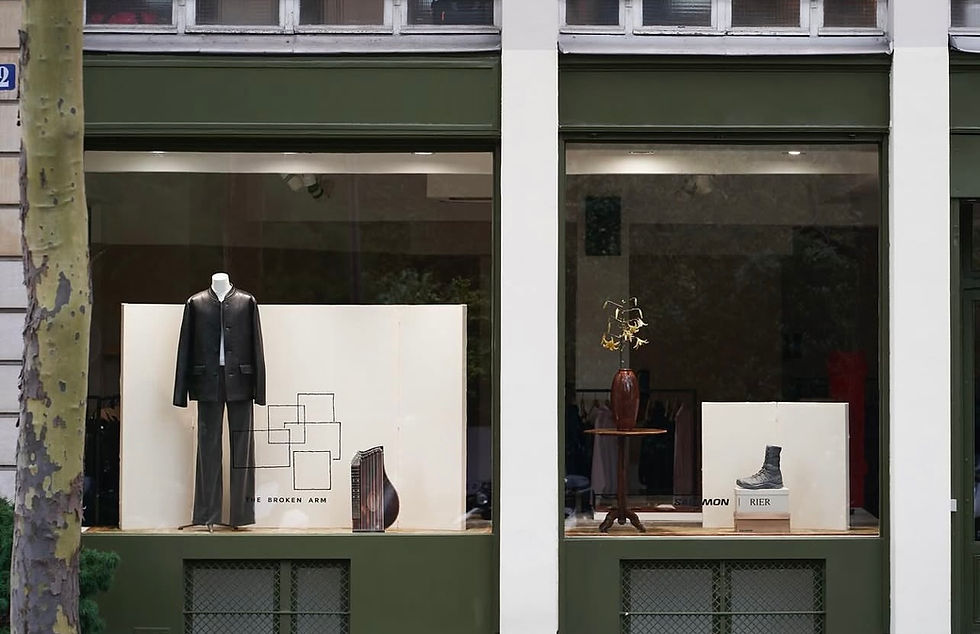
Kolroy : So you're one of the founders of TBA, and it's true, we’re not used to seeing a brand founder also working directly in the shop.
Romain : Yeah. But for us, there’s not really a hierarchy. I still love being in the store, talking with people, that’s what matters the most.
Kolroy : Don’t you have tasks that require you to be in the office ?
Romain : Yeah, of course, but when the shop’s closed, (laughs). Sometimes we arrange things. Right now, I’m here, and Guillaume is off doing something else, Anaïs too, and we rotate like that.
But in any case, everyone spends time in the shop, not just during Fashion Week when the fashion crowd is around. It’s also on a random Tuesday in November.
Kolroy : Back to Salomon, I think you’re the ones who brought the XT-Quest 2 back, right ? It had kind of disappeared before.
Romain : Yeah, they weren’t making it anymore. They had to reopen the mold.

Kolroy : And then there was the Desalpes, which we still haven’t seen outside of your collab so far.
Romain : Yeah, the Desalpes hasn’t been brought back yet. I don’t know if they plan to reintroduce it or not. We had done a Quest before, for example.
Kolroy : But not the 2.
Romain : Right, that one was kind of a hybrid. It’s a model we really liked. The first version we did was also available in other stores, and we were actually a bit frustrated, we didn’t get many pairs for our own shop. So when we saw that sole again, the one that’s stiffer, originally used on a high-cut hiking shoe, with that distinctive two-tone outsole, they reopened the mold so we could bring back a kind of XT-Quest OG.
Kolroy : And you reused a previous colorway, right ?
Romain : Exactly, yeah. With the idea of doing the Texas version afterward.
Kolroy : Which has its own story.
Romain : The Desalpes too. But at the end of the day, they do what they feel makes sense.
Kolroy : I remember seeing the Desalpes a little bit before, but it never really came out.
Romain : Right and it was never really part of what you’d call their “lifestyle” range. It was a shoe made a long time ago, which is what made it interesting. It was actually repurposed by shepherds and mountain people. That’s really where our inspiration came from. We realized it wasn’t being worn much and wasn’t part of what you usually see from Salomon like the XT-6, for example.
But at the same time, it had the potential to be repurposed for everyday wear, especially for people who needed something really functional. The outsole has those aggressive lugs, it’s super durable, the Gore-Tex membrane, the rough suede, all of that made sense.
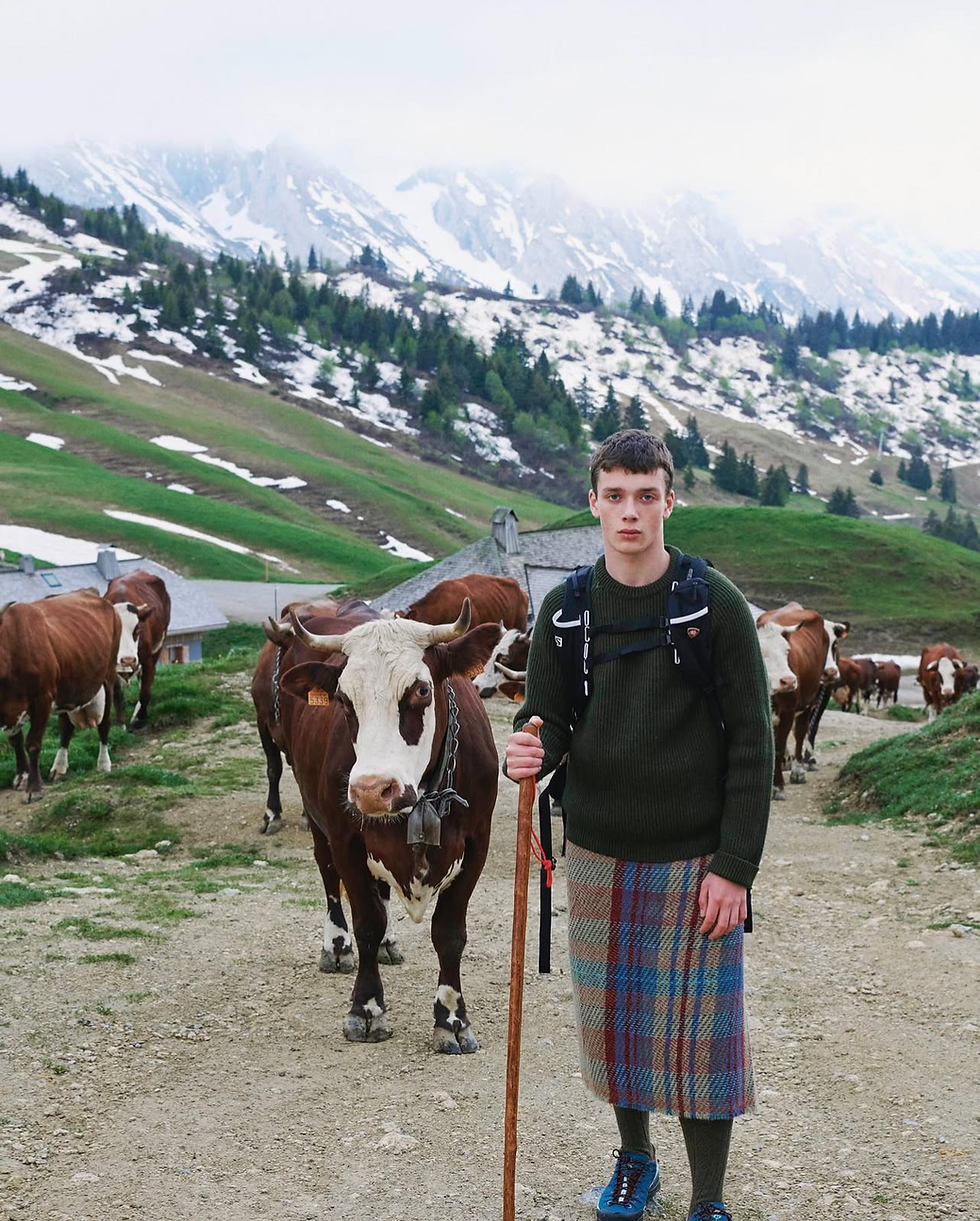
And it’s something we’d already explored with them when we did the Slide and the Trail Pro down there with all those hairy suedes and raw materials. The Slide, too, wasn’t originally part of their lifestyle range.
Kolroy : Wait you also did a collaboration on the Slide ?
Romain : Yeah ! So we did the Snowcross, a Wings, and a Shelter. Then came the Slide and the Trail Pro. I think we’ve done… thirteen, maybe ?
Kolroy : Thirteen collabs ??
Romain : Yeah.
Kolroy : Oh wow ! (laughs)
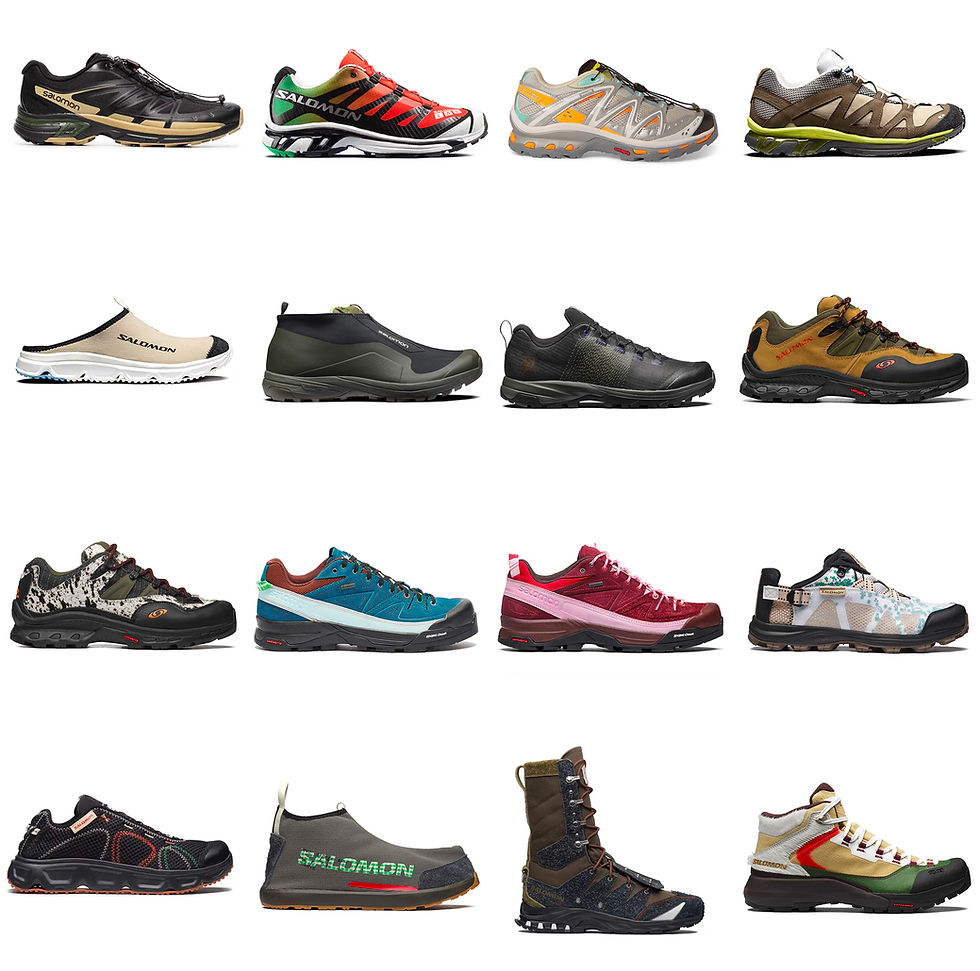
Romain : And some of them we’ve re-released. You see there is some Matryx fabric on the Texas
Kolroy : But what’s Matryx fabric exactly ?
Romain : It’s a textile made in France, woven with Kevlar threads. It’s produced on old-school looms like an old loom for making rugs. It's made in France with a kevlar thread.
The company behind it is pretty amazing, they’re based in the Jura region. We actually visited their factory. They make racing suits for Formula 1. Their biggest point of pride is that when a driver crashes during a race, he doesn’t burn thanks to their suit.
So it adds a ton of durability. These are materials that are also used by the military. It’s always super interesting to look into that, and then when you apply it to sneakers, it brings benefits like resistance to wear, anti-abrasion… all kinds of functional properties that make total sense for footwear.
Kolroy : And now Salomon is kind of in fashion being worn more and more...
Romain : Yeah, it’s definitely more part of the lifestyle space now.
Kolroy : We could even say it’s gone mainstream today. I feel like it kind of all started with The Broken Arm, the idea that people could discover these kinds of shoes in fashion-forward shops. Was the first time you saw that actually at The Broken Arm ?

“We were genuinely convinced by Salomon’s design. And sure, now it’s hard to unsee it, with XT-6s everywhere…“
Romain : Yeah, that’s true but Salomon existed well before that and had already done a lot of things.
Kolroy : Of course, but it was aimed at a different audience back then.
Romain : Oh yeah, definitely. But for us, the idea was always that it had to mean something. Kolroy : Yes of course ! Romain : Like, we didn’t just go grab Pataugas or some other random shoe and say, “No one’s paying attention to these, let’s put them in the store.” We were genuinely convinced by Salomon’s design. And sure, now it’s hard to unsee it, with XT-6s everywhere…
But the first time you saw that kind of design, it really stood out, it was much more polarizing than a lot of other sneakers. Especially at a time when the sneaker scene had kind of stalled, there weren’t many big releases from Nike either.
With Asics, we were asking for stuff they didn’t make anymore. You didn’t have shoes with 3D mesh or visible stitching, all the tech was hidden, and most sneakers looked the same. Kolroy : We're talking around 2013 or 2014, right ?
Romain : Yeah, yeah around then. And even for two or three years after that, it was still kind of the same in sneakers. There weren’t really any major developments until a new wave of Nike collabs came along. Which is normal, some periods are just stronger than others.
We didn’t want brands to just do what we wanted, or what we thought people wanted to wear.
We also wanted new things, stuff we hadn't thought of at all.There’s nothing better than when you imagine something… and then you get surprised and it’s completely new.
That happens less often now, obviously. The more there is out there, the harder it is to find that feeling again. But Salomon came at exactly the right moment, we needed something more polarizing.
There were people who walked into the store, looked at them, and were like “What is that ?” And we kind of loved those reactions.
It’s not like we found some UFO or something completely crazy, it’s just that we saw a kind of beauty in it that wasn’t necessarily shared by everyone else.
Kolroy : You’re talking about that feeling of newness you had with Salomon, have you ever felt that with another brand you helped launch ?
Romain : You mean specifically a sneaker brand ?
Kolroy : Yeah.
Romain : With sneakers, it’s definitely harder. But there have been moments for example, I remember the first time Kiko did a collab with Asics, there was real energy behind it.
It came from a totally different context, and yet every pair had this clear continuity. You could instantly tell it was an Asics, with so much finesse, all those little design touches we’d been wanting to see.
Kolroy : And that first Kiko collab, did you carry it in the shop ?
Romain : Yeah, we had it.
Kolroy : Did people trust Kiko right away on that Asics collab ?
Romain : We believed in it a lot. I think even at Asics, they didn’t really size it properly back then. But for us, it made total sense, we’d already been carrying Kiko’s collections for three or four years.
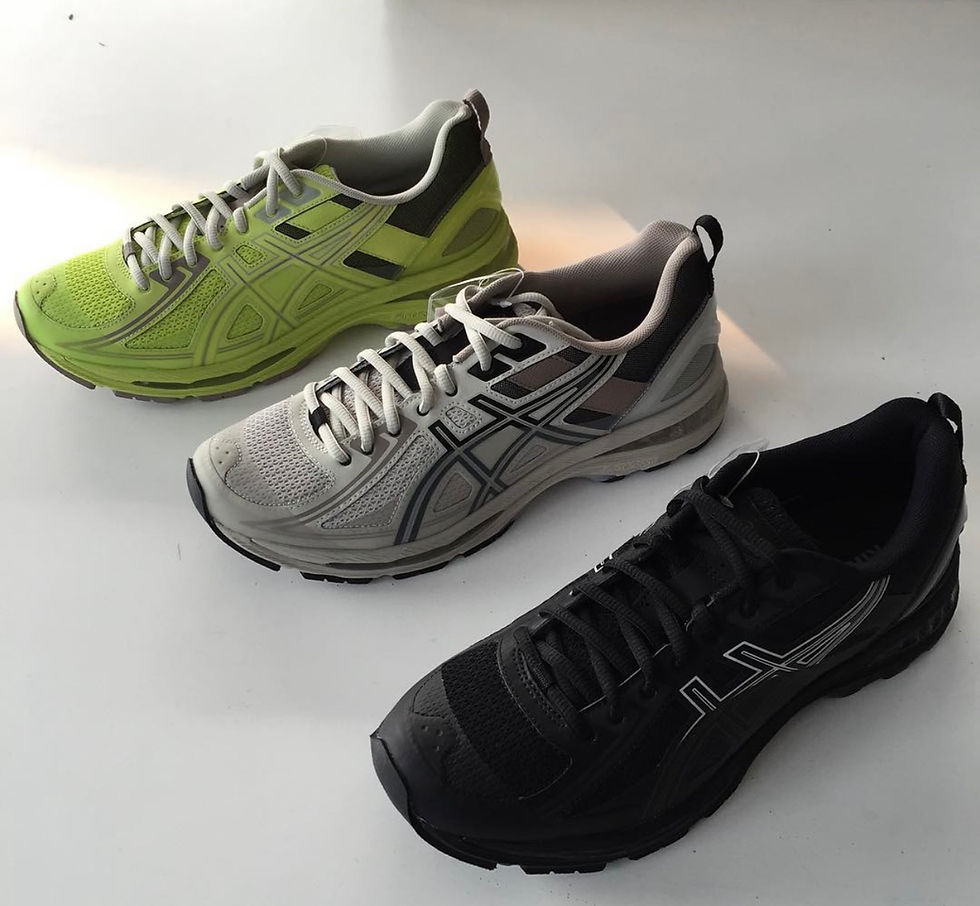
So for us it was the perfect combo : two brands we already had in the store, finally collaborating. And yeah, it worked really well.
It wasn’t like people were lining up around the block, but it’s one of those pairs I really love, because there’s no hype, no resell story. No one saw it coming, and it reached a bit of everyone.
You had sneaker fans who usually go for more classic stuff coming in for it too like what happened with the Comme des Garçons Air Max 180.
For me, it gives the same kind of feeling, the three colorways with the pink gradients and all. That pair was something we absolutely loved, but also the sneakerheads loved it. And at the same time, it was super fashion, Comme des Garçons, shown on the runway, super bold to wear with shorts and all that.
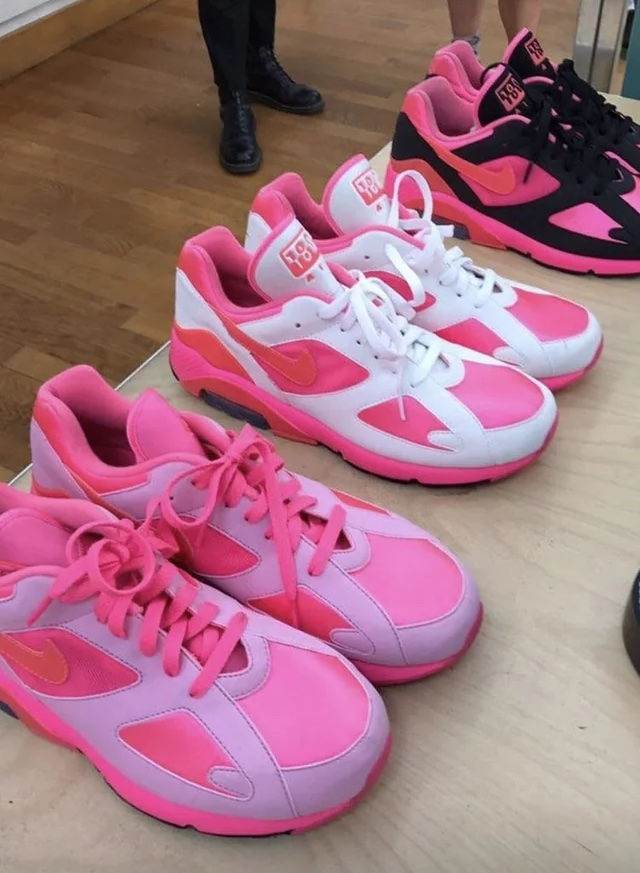
But it was also bought by our fashion clients, our sneaker clients, people who didn’t even know the store but came because we had it.
It’s the best kind of middle ground for us. It’s not mainstream, it’s just a beautiful product. And that product speaks to everyone. My aunt, for example she loved that pair.
Kolroy : So who would you say is the typical The Broken Arm customer ?
Romain : There are all kinds of customers, really !
Yeah, it's super varied, lots of different profiles.
What I’d like and I think it’s what we manage to do best is keep things accessible. Anyone can come in. We're not a luxury store. We don’t have those luxury "codes." People are free to do what they want in the shop.
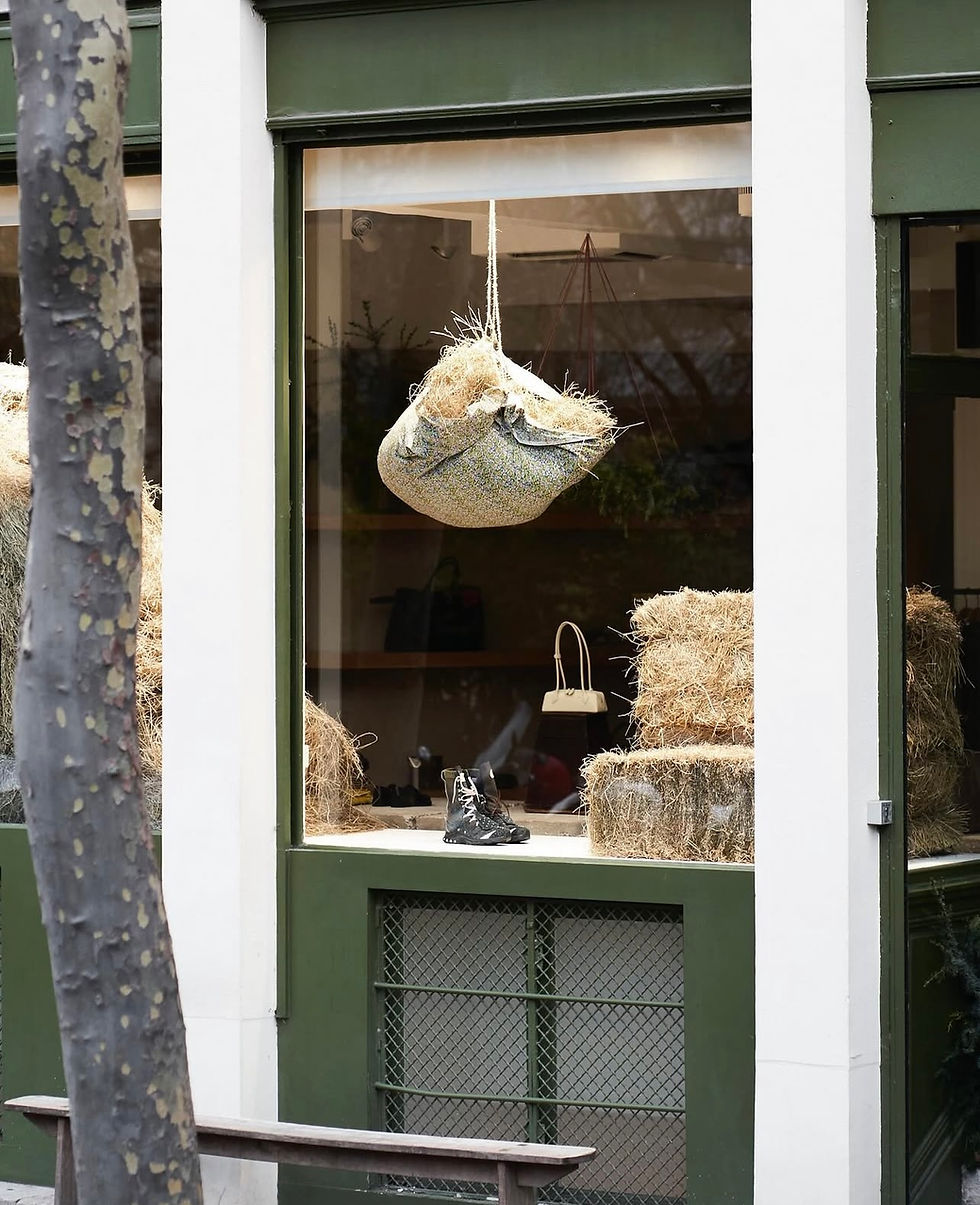
It's important to maintain that spirit so there’s always students, people walking in for the first time, even if they're not really into this or that designer, or if they’re not sure if something is men’s or women’s.
At the end of the day, what matters most is that they leave with a good feeling. Ideally, they discover something new here and think, “Oh wow, there's that too.”Like fashion students who walk in and go, “Wait, Ann Demeulemeester ?” and it makes them think, do some research, and come back later.
It’s a bit like when we were younger and would visit Maria Luisa in Paris. Obviously, we weren’t going there to buy anything, we just wanted to look at the clothes, to understand.
Like walking into a Rick Owens store and seeing the whole setup that feeling is amazing.
Of course, you're not walking out with silver forks or whatever, but just being able to see it, to take it in, that’s important.
So for me, having a diverse customer base is really essential. And the café plays a big role in that, too. We’ve had a café since the beginning, keeping that welcoming, open vibe.
In the first five years, we had people who came in every morning for coffee and never once stepped into the boutique but they were people we knew, saw every day.
And honestly, that’s great. Especially when the weather's nice and people are out, it just feels good.
We get students, tourists who’ve heard about the shop and stop by but if everything in the store costs 3000€, they’ll do one quick lap, maybe touch a few things, and then leave like, “Okay… that was cool, I guess ?” It was over in 5 minutes, despite all the fuss he'd made about it.
So yeah, thinking about pricing is part of the reflection too. The café adds that social, open dimension. You can sit and hang out and when you look around at the people passing through, it’s actually really nice. That’s something we really like.
Kolroy : And when it comes to pricing for people who don’t have a huge budget, it’s mostly the sneakers that are somewhat accessible at The Broken Arm right ?
Romain : Yeah, and we also release our own T-shirts. We never intended to make big money off of them, they’re like 35€. At one point we developed it more, did some collabs, but we’ve kind of paused that because of time.
The idea was always: "Hey, we really like this music label, they’ve never done a T-shirt what if we made one with them ?" So we would do it, give them their share, and sell them here.
Kolroy : Do you also have one with Dreamin Man ?
Romain : Yes, we did one with them. I think they were already making some before, though. But yes, the idea is to do things like that. And then, of course, sneakers even if prices keep going up. That is also part of our thinking. As soon as a pair takes off completely, you start asking yourself questions…
For some collaborations, it can make sense when it is something truly unique. But yes, ideally not everything should be 400 euros to the point where no one can buy anything.
Kolroy : I also wanted to talk about stock. The early The Broken Arm x Salomon collaborations like the Techamphibian or the Desalpes felt like they had very little stock and sold out instantly.
Romain : Yes.
Kolroy : You didn’t even have time to click…
Romain : Exactly. That is also part of our idea...
Kolroy : Of restocking the pairs ?
Romain : Yes, either to re-release them like we did with the Desalpes because that one we also promoted as our 10th-anniversary pair. But we had done it before. Take the Wings for example, it was one of the second or third pairs we did. In the end, we made a lot of them, but we reissued it. It lasted for two years. That is the way we want to do things. If a product only lasts three seconds online, then you are caught in a whole system... Kolroy : Of frustration...
Romain : Exactly. And it becomes part of the resell hype... I feel like that is starting to cool off a bit, but I would much rather people be happy to find the product than say, “Too late man, you should have come earlier.“
We try to avoid that now. I do not know if it always pleases everyone. Sometimes people think that if instead of making 400, you make 3000, then you are seen as the one who did not sell out. We're not claiming anything about it.
Kolroy : When you say it does not please everyone, do you mean some people are unhappy that a pair is reissued after they bought it the first time ?
Romain : Not exactly. It is more that there was a time with all the Supreme drops and stuff like that where people stopped even asking whether the product was good or not. It just became, ‘Damn, I need it !’ You do not even know why you want it anymore.
And if it is for resell, I totally understand. It is a real business and I have absolutely no problem with that.
Kolroy : Everyone can do what they want with their money.
Romain : Exactly. And in the end, you would have to be a complete fool to think that if a pair costs 120 euros in-store and resells for 4000, well... the profit is obvious.
But I do not want the things we do with Salomon where there is a kind of long-term dynamic to fall into that kind of logic either, where the product is only made to generate resell hype. That no one actually looks at the product anymore, and it’s all just about the hype. It would be a bit ridiculous and out of proportion with who we are.
Some pairs ended up like that, sure, but even when we produced 1000, it worked because there was genuine excitement at the time, or something unique happened. And now, we just produce more when we feel it is right.
Kolroy : With Salomon, is it you who decides how much stock to make ? Or is it based on demand like “we need this many” ?
Romain : No, no. You define a number from the beginning. It takes about a year to develop a product, so you lock it in at the start. We take on the stock ourselves, we pay for it so it is always a financial risk.
But I always prefer it that way. To know exactly why we are doing something rather than thinking everything should be easy.
“When you do something that is not necessarily easy, and people still get it, that is the best feeling.“
The Cross Amphibian, for example, was also interesting because it was available in smaller women’s sizes which is not always the case in our collabs, because some soles do not exist in smaller sizes. And re-developing the mold just to make smaller ones would be very expensive.
Kolroy : It was maybe also a pair that was harder to wear than the others ?
Romain : The Cross Amphibian ?
Kolroy : Yes. Romain : But that is what is enjoyable about it. In terms of design, when you do something that is not necessarily easy, and people still get it, that is the best feeling.
Sometimes we choose to release a pair only on Salomon’s website and at our store and that is it.
Kolroy : I feel like you choose a lot of products based on personal taste. There are things at the shop that you do not see anywhere else, which means you must really like them. But are there also products that you do not necessarily love, but you still need to have them ?
Romain : It is not exactly a “need,” because if it ever felt like that, I do not think we would still be in the shop. But there is a kind of balance. Of course we need to make a living, we have 15 employees and everyone needs to be paid. There is a financial reality behind all this. We are not utopians thinking we are running a museum, you know ?
But yes, maintaining a sense of radicality, that matters.
It does not matter whether the product is super hyped or really well-known, even if it is the most basic item, if we believe in it, that already gives us a lot of confidence. We try not to make compromises in our choices. Sure, there are a lot of sneaker releases that generate hype, but I do not see that as inherently negative. A model that everyone wants, I do not want to be elitist about that.
There were a lot of younger kids who discovered the shop when we carried Virgil’s collaborations, for example. Even though it was not the thing that touched me personally the most, what I remember is the moment itself. At a time when everyone was doing raffles, we did an in-store release, no security, just us and I really have a great memory of that.
The point was not to hand everything over to resellers filling up vans, it was just about that kind of energy, that rush. It was a morning during Fashion Week, and it really stayed with me.
And all the guys who no longer resell sneakers but still drop by sometimes, they bring it up, and it always reminds me of something good.
At the end of the day, it is never that serious. Everyone will get their pair. And once it is sold out, it is sold out. There is no need to make it more complicated than that. We have never sold anything for more than the retail price, and there was never any drama when we did it like that.
I think it is when there is ambiguity when things feel off, that it becomes an issue. When you do not know how many pairs there are. We were transparent from the start. Like, “There are this many pairs left in size 9.5 US,” or if we did not say exact stock, we would at least ask what size people wanted and be honest about whether we had it or not.
Yes, we did put aside pairs for our friends, of course but it was never a big deal. And we always said it openly, just to keep things clear.
Now, honestly, there are fewer releases like that. And we do not have Jordan in the store either, so we are not part of those really big drops. Since we do not have a Jordan account, and most of the high-demand releases revolve around that, those kinds of sneaker-focused customers come by less now and that is fine.
It does not stop us from continuing to sell Comme des Garçons dresses.
Thank you for reading, that’s the end of this interview. If you have any thoughts or questions, feel free to leave a comment. You want to work with us ? Contact : kolroy@kolroystudio.com






























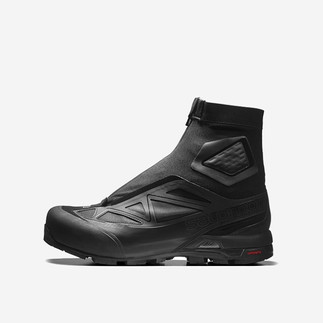






















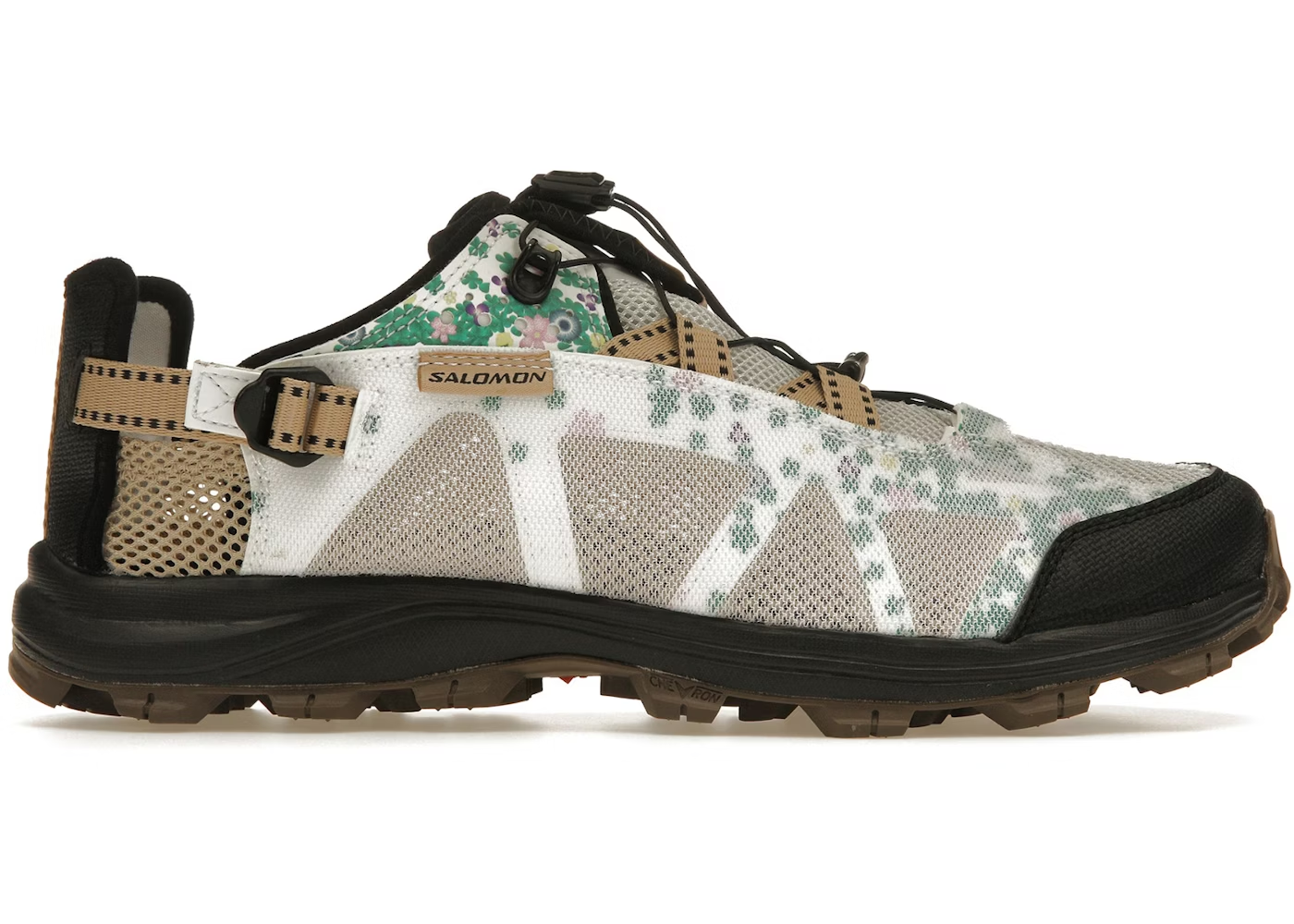



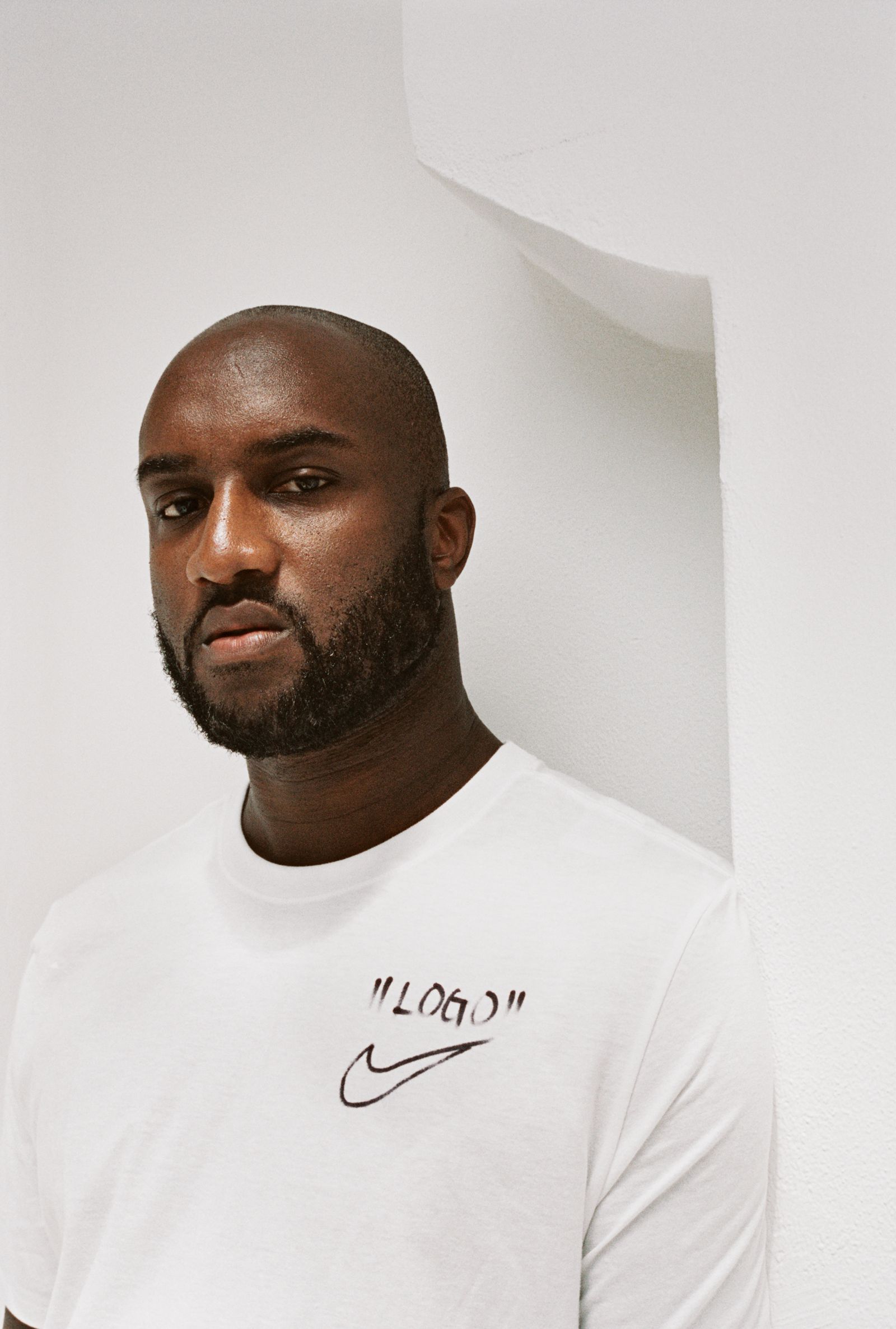





Comments